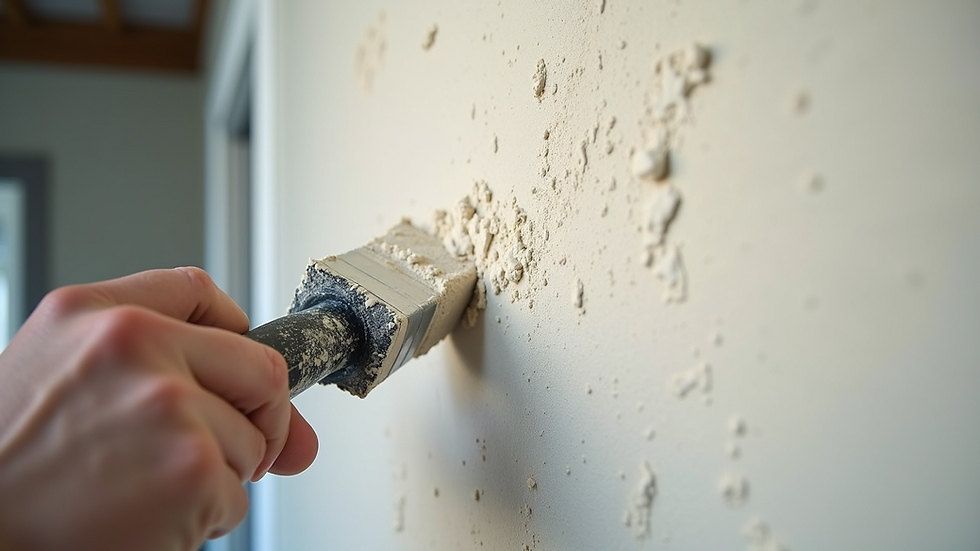The Art of Plastering: What to Expect During the Process
- Prestige Plastering & painting
- 3 days ago
- 4 min read
Plastering is a skilled craft that transforms bare walls and ceilings into smooth, attractive surfaces. Whether you are renovating an old home or finishing new construction, understanding the plastering process can help you prepare and get the best results. This guide will walk you through what to expect during plastering, highlighting key steps, materials, and tips for a flawless finish.
Understanding the Prestige Plastering Process
Plastering is more than just applying a layer of material on walls. It involves preparation, skillful application, and finishing touches to ensure durability and aesthetics. The process typically starts with surface preparation, where any dust, dirt, or loose material is removed. This step is crucial because a clean surface allows the plaster to adhere properly.
Next, a base coat or scratch coat is applied. This layer provides a strong foundation for the finishing coat. It is usually roughened slightly to help the next layer stick better. After the base coat dries, the finishing coat is applied. This layer is smoothed and polished to create an even, attractive surface.
For example, when working with drywall, the plasterer might apply a thin layer of plaster to cover joints and screws before the final coat. In older homes with brick or stone walls, the plaster may need to be thicker to cover uneven surfaces.

Key Materials and Tools Used by Prestige Plastering
The quality of plastering depends heavily on the materials and tools used. Common plaster materials include gypsum plaster, lime plaster, and cement plaster. Each has its own properties and best uses:
Gypsum plaster: Quick setting and smooth finish, ideal for interior walls.
Lime plaster: Breathable and flexible, suitable for older buildings.
Cement plaster: Strong and water-resistant, often used for exterior walls.
Tools used in plastering include trowels, hawks, floats, and mixing buckets. A trowel is essential for spreading and smoothing plaster, while a hawk holds the plaster during application. Floats help achieve a polished finish.
Using the right tools and materials ensures the plaster adheres well and lasts long. For instance, a skilled plasterer from prestige plastering aventura will select materials based on the wall type and environmental conditions to guarantee the best outcome.

Preparing Your Space for Plastering
Before plastering begins, proper preparation of the space is essential. This includes protecting floors, furniture, and fixtures from dust and splashes. Covering these areas with plastic sheets or drop cloths helps keep the workspace clean.
Walls should be inspected for cracks, holes, or loose material. Any damage must be repaired before plastering. For example, filling large cracks with filler or mesh tape prevents future cracking in the plaster.
Ventilation is also important during plastering to help the plaster dry evenly and reduce dust accumulation. Opening windows or using fans can improve airflow.
If you are hiring professionals like prestige plastering aventura, they will typically handle all preparation steps. However, knowing what to expect helps you coordinate and avoid surprises.
The Step-by-Step Plastering Process
Plastering involves several stages, each requiring attention to detail:
Mixing the plaster: The plaster powder is mixed with water to the right consistency. Too thick or too thin plaster can cause problems during application.
Applying the base coat: This first layer is spread evenly over the wall. It may be scored or scratched to create a rough surface for the next coat.
Allowing drying time: The base coat must dry completely before the finishing coat is applied. Drying times vary depending on plaster type and environmental conditions.
Applying the finishing coat: A thin, smooth layer is applied and carefully troweled to create a flawless surface.
Final smoothing and polishing: After the finishing coat sets, the plasterer may use a wet sponge or float to polish the surface.
Patience is key during plastering. Rushing any step can lead to cracks, uneven surfaces, or poor adhesion.
Tips for Maintaining Newly Plastered Walls
Once plastering is complete, proper care helps maintain the surface quality. Here are some practical tips:
Avoid painting or wallpapering too soon: Allow the plaster to cure fully, which can take several days to weeks depending on conditions.
Keep the area well-ventilated: Good airflow helps prevent moisture buildup that can damage plaster.
Handle walls gently: Avoid knocking or scratching the surface during the curing period.
Clean with care: Use a soft, dry cloth to remove dust. Avoid harsh chemicals or abrasive tools.
If you notice any cracks or damage after plastering, contact professionals like prestige plastering aventura for advice and repairs.
Enhancing Your Home with Expert Plastering
Plastering is an art that combines technical skill with aesthetic sense. Choosing experienced plasterers ensures your walls and ceilings look beautiful and last for years. Whether you want smooth modern finishes or textured decorative plaster, professionals can tailor the work to your style and needs.
By understanding the plastering process, you can better communicate with contractors, prepare your space, and enjoy the transformation of your home. Remember, quality plastering is an investment in your property’s value and comfort.
If you are considering plastering services, explore options like prestige plastering aventura for expert craftsmanship and reliable results.

Plastering is a rewarding process that enhances the beauty and durability of your home’s interiors. With the right knowledge and professional help, you can expect a smooth, lasting finish that elevates your living space.
.webp)


Comments